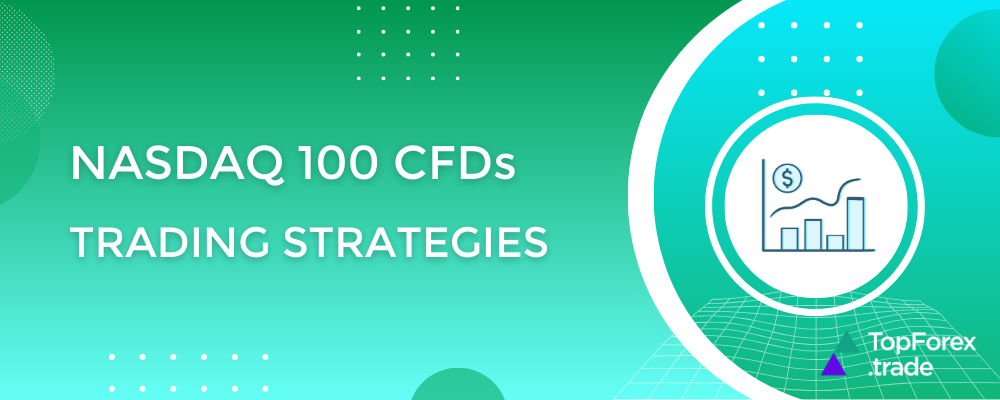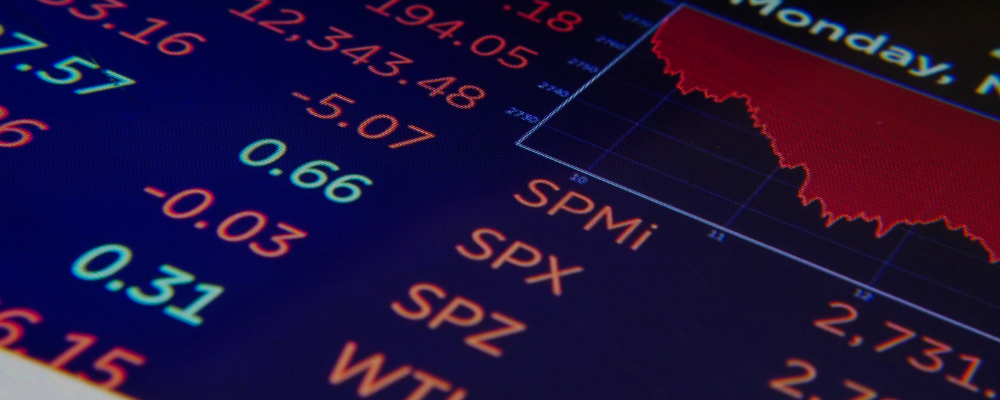How to trade NASDAQ 100 CFDs: strategies and expert tips

Trading NASDAQ 100 Contracts for Difference (CFDs) offers opportunities to profit from the index’s price movements without owning the underlying assets. Based on historical data and past performance, several strategies have proven effective:
NASDAQ 100 trend following
Concept: Capitalize on sustained market movements by aligning trades with the prevailing trend.
✅ Implementation:
-
Moving Averages: Utilize indicators like the 50-day and 200-day moving averages to identify trends. A common approach is the Golden Cross, where the 50-day moving average crosses above the 200-day moving average, signaling a potential buy opportunity. Conversely, a Death Cross occurs when the 50-day moving average crosses below the 200-day moving average, indicating a potential sell signal.
📌 Example: In 2023, a Golden Cross formed on the NASDAQ 100, signaling a long-term bullish trend. Traders who followed this pattern saw strong gains as the index climbed.
NASDAQ 100 mean reversion

Concept: Exploit price deviations from the average, anticipating a return to the mean
➡ Forex mean reversion explained
✅ Implementation:
Intraday buying/selling pressure (IBS):
-
Formula: (close – low) / (high – low)
-
📉 IBS < 0.1 → Oversold, buy opportunity
-
📈 IBS > 0.9 → Overbought, sell opportunity
✅ Entry and exit rules: -
Enter long on Mondays or Tuesdays when the IBS is 0.1 or lower.
-
Exit when the closing price surpasses the previous day’s high.
📌 Example: Backtesting from 2006 onward showed that this strategy generated an average of $600 per contract, with a profit factor of 4.13.
NASDAQ 100 breakout trading
Concept: Identify and trade significant price movements when the index breaks through established support or resistance levels.
✅ Implementation:
Identify key levels:
-
Resistance: A level where price struggles to break above.
-
Support: A level where price tends to bounce back up.
Confirmation tools: Use RSI (Relative Strength Index) and MACD (Moving Average Convergence Divergence) to confirm breakout strength.
Volume analysis: High trading volume increases breakout reliability.
📌 Example: The NASDAQ 100’s 2021 breakout from 13,000 to 16,000 provided a prime buying opportunity, delivering massive profits for breakout traders.
NASDAQ 100 statistical arbitrage

Concept: Leverage statistical models to identify and exploit short-term pricing inefficiencies between correlated assets.
✅ Implementation:
-
Pair еrading: Simultaneously buy and sell correlated securities to profit from temporary divergences in their historical relationship.
-
Quantitative analysis: Use historical data to identify patterns and mispricings between related securities.
- High-speed execution: Since price differences may last only minutes, algorithmic trading is often used.
📌 Example: Many hedge funds apply this strategy to trade NASDAQ tech stocks like Apple & Microsoft, exploiting short-term mispricings for low-risk, high-probability gains.
NASDAQ 100 momentum trading
Concept: Trade based on the strength of recent price trends, buying assets showing upward momentum and selling those with downward momentum.
✅ Implementation:
-
Technical indicators: Use RSI, MACD, and Moving Averages to measure trend strength.
-
Entry and exit:
-
Enter when momentum is strong and confirmed by indicators.
-
Exit when signals show weakening momentum or reversal.
-
📌 Example: In 2020-2021, Tesla’s NASDAQ 100 rally saw its price surge over 700%, with momentum traders riding the uptrend using RSI and MACD confirmations.
Note: While these strategies have shown historical effectiveness, past performance does not guarantee future results. It’s essential to conduct thorough backtesting and consider current market conditions before implementing any trading strategy.
NASDAQ 100 case study: breakout trading strategy

Market context:
-
Date: September 2023
-
Event: Tech earnings reports
-
NASDAQ 100 price level before the event: The NASDAQ 100 was trading in a range between 14,500 (support) and 15,000 (resistance) for several weeks, with tight consolidation as investors awaited key tech earnings reports from major companies like Apple, Microsoft, and Amazon.
-
Catalyst: Positive earnings surprises led to a strong uptick in investor sentiment, pushing the index toward the resistance level at 15,000.
✅ Step-by-step trading example:
-
Identify key levels (support and resistance):
-
Resistance level: 15,000
-
Support level: 14,500
-
-
Pre-breakout setup:
-
The NASDAQ 100 has been consolidating between 14,500 and 15,000 for the past few weeks. Traders are now awaiting the earnings reports. Positive earnings from major tech companies could trigger a breakout to the upside.
-
Technical indicators used:
-
RSI (Relative Strength Index): RSI was nearing 50, showing a neutral market stance but with potential to move higher.
-
MACD (Moving Average Convergence Divergence): The MACD was starting to show signs of a bullish crossover, suggesting upward momentum.
-
-
-
Confirmation of breakout:
-
On September 23, 2023, the earnings reports from major NASDAQ-listed companies exceeded expectations, and the NASDAQ 100 index surged past the 15,000 resistance with strong volume.
-
Volume surge: Trading volume increased significantly, confirming that this breakout was supported by strong investor interest.
-
-
Enter the trade (breakout trade):
-
Entry point: The price breaks above 15,000, and the breakout is confirmed by:
-
Volume: The price surge is accompanied by a 50% increase in volume, signaling that the breakout is likely to continue.
-
RSI and MACD: RSI moves into the overbought territory (above 70), but the MACD crossover indicates that momentum is strong enough to support further upward movement.
-
-
Order execution: The trader enters a long position at 15,050, just after the breakout above 15,000.
-
-
Setting stop loss and target:
-
Stop loss: Set just below the breakout level at 14,800, ensuring the position is protected in case the breakout proves to be false.
-
Take profit: A conservative target is set at 15,500 (next resistance level) based on the price action and historical movement.
-
-
Trade outcome:
-
Trade duration: 3 days
-
Price movement: The NASDAQ 100 continues its upward trend and hits the 15,500 resistance in just 3 days.
-
Take profit hit: The trader’s target is hit at 15,500, providing a 450-point profit.
-
Performance breakdown:
-
Entry price: 15,050
-
Exit price: 15,500
-
Profit per CFD contract: 450 points
-
Risk-to-reward ratio: 2:1 (Risking 250 points, Targeting 450 points)
The breakout trading strategy was highly effective in this scenario. By entering the market at the moment the NASDAQ 100 broke through 15,000, the trader was able to capitalize on a strong upward momentum driven by positive earnings reports. With clear entry, stop-loss, and target points, the trade generated a solid return with relatively low risk.
Top Forex brokers for NASDAQ 100 CFDs trading
HF Markets (HFM) – best for tight spreads and execution speed
Why choose HFM?
✅ Ultra-low spreads from 0.1 pips on NASDAQ 100 CFDs
✅ Lightning-fast execution with no requotes
✅ Multiple account types, including Zero Spread for cost-efficient trading
✅ Supports algorithmic trading & scalping strategies
✅ Regulated by top-tier authorities (FCA, CySEC, FSCA)
📌 Best for: Day traders and scalpers who need minimal spreads and fast execution.
Exness – best for flexible leverage and low trading costs
Why choose Exness?
✅ Offers unlimited leverage for experienced traders
✅ Zero spreads on NASDAQ 100 CFDs during peak hours
✅ Instant withdrawals with no hidden fees
✅ Advanced risk management tools & negative balance protection
✅ Trusted globally with multiple regulatory licenses
📌 Best For: Traders looking for high leverage and low-cost trading conditions.
eToro – best for Copy trading and Social trading
Why choose eToro?
✅ Industry-leading copy trading feature to follow top NASDAQ 100 traders
✅ Intuitive platform with built-in social trading tools
✅ Commission-free trading on NASDAQ 100 CFDs
✅ Regulated by FCA, ASIC, and CySEC for security
✅ Offers a user-friendly mobile app for trading on the go
📌 Best for: Beginners and passive investors who want to copy experienced traders.
Risk disclaimer: eToro is a multi-asset platform which offers both investing in stocks and cryptoassets, as well as trading CFDs.
CFDs are complex instruments and come with a high risk of losing money rapidly due to leverage. 61% of retail investor accounts lose money when trading CFDs with this provider. You should consider whether you understand how CFDs work, and whether you can afford to take the high risk of losing your money.
This communication is intended for information and educational purposes only and should not be considered investment advice or investment recommendation. Past performance is not an indication of future results.
Copy Trading does not amount to investment advice. The value of your investments may go up or down. Your capital is at risk.
Don’t invest unless you’re prepared to lose all the money you invest. This is a high-risk investment and you should not expect to be protected if something goes wrong. Take 2 mins to learn more.
eToro USA LLC does not offer CFDs and makes no representation and assumes no liability as to the accuracy or completeness of the content of this publication, which has been prepared by our partner utilizing publicly available non-entity specific information about eToro.
AvaTrade – best for advanced trading tools and fixed spreads
Why choose AvaTrade?
✅ Fixed spreads on NASDAQ 100 CFDs for better cost control
✅ Access to MT4, MT5, and AvaTradeGO for multi-platform trading
✅ Free risk management tools, including AvaProtect insurance
✅ Strong regulation across multiple jurisdictions
✅ Supports automated trading and expert advisors (EAs)
📌 Best for: Traders who prefer fixed spreads and risk management tools.
XTB – best for professional analysis and advanced charting
Why choose XTB?
✅ Award-winning xStation platform with advanced charting and indicators
✅ Low commissions and competitive spreads on NASDAQ 100 CFDs
✅ Free in-depth market analysis and trading education
✅ Fast execution speed with no slippage
✅ Trusted by thousands of traders with FCA and CySEC regulation
📌 Best for: Traders who rely on technical analysis and advanced charting tools.
In a nutshell
The best broker for trading NASDAQ 100 CFDs depends on your trading style:
🔹 Scalpers and day traders → HF Markets and Exness
🔹 Copy traders & beginners → eToro
🔹 Risk-conscious traders → AvaTrade
🔹 Advanced technical traders → XTB
🚀 Choose the broker that fits your needs and start trading NASDAQ 100 CFDs with confidence!
Related articles:
Trading NASDAQ 100 CFDs - FAQ